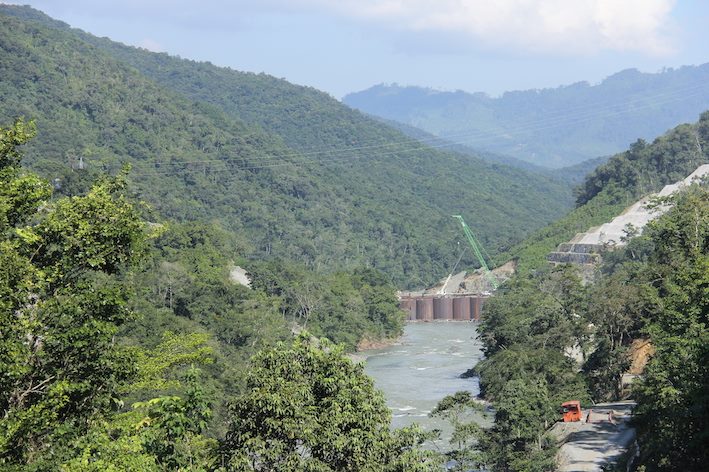 rivers | guidebooks | forums | tips | other
rivers | guidebooks | forums | tips | other*November 2015 update* Oxec II dam construction is advancing rapidly. Peaceful protests by concerned Mayan neighbors have been met with violence (gun shots, tear gas, etc) since as early as October 2014. The communities have denounced these acts, and the lack of a community referendum, to the national Congress and the Human Rights Defender's Office, but so far they have heard no response. To stay current on the ongoing events, I recommend following the "No mas represas grandes en Guatemala" Facebook page.

Paddlers are naturally anti-damming. We love our rivers in their natural state. But we are in a world of large energy demands and limited resources, and no solution to these problems is cost-free. The developing world in particular has been looking to hydropower to supply the electrical demands of people and industry. In some cases there are good arguments for hydro power. In other cases the cost is just too high.
Economically, hydro power makes sense in many cases. The engineer in me can appreciate the benefits. The cost per megawatt-hour is competitive. This is especially true for countries with ample rain and few fossil fuel reserves. It has low maintenance costs. Because water can be stored and released, it allows for generation during peak demand. (Wind and solar are growing, and hold a lot of promise for the future, but they do have the daytime-only limitation.) It is clean for the most part. Beyond that, if it is a big dam, the building phase stimulates the economy.
But there are serious problems with hydro power, mostly environmental. The footprint is large, from the reservoir, to the roads, to the canals, to the powerhouse, to the installation of the transmission lines. This affects both the natural environment and the communities in the way. Natural migration and movement of animals is impeded, both in the water and on shore. The temperature of downstream water is unnaturally increased, affecting all life forms. The natural movement of sediment and nutrients is stalled, affecting not just the river but its deltas and even the oceans. Decomposition of organic matter in the reservoirs creates greenhouse gases. Climate change may make dams non-viable in some areas. And in the event of dam collapse (a bigger risk in earthquake zones), there is the danger of a catastrophic flood. For paddlers, of course, flooded and dried sections of river are anathemas.
A cold analysis of the pros and cons of dams, however, leaves out an important element that I and other paddlers have come to appreciate: the river’s spirit. A river is more than the sum of its parts, and is part of an ecosystem so complex that it somehow seems wrong to mess with it in such a destructive way. If you add to the equation the loss of an irreplaceable nature experience, the arguments against a dam can become compelling. A river can add such an important spiritual element to the life of a country, it becomes a natural resource all its own. The Cahabón is one such river.
The Río Cahabón is Guatemala’s best-known river and an iconic one. In 1999 Paddler magazine named it one of the top 12 jungle river trips in the world. It offers a three day rafting trip with big rapids, wonderful scenery, and an up-close look at the jungle and the people that inhabit it. It is unique in the Mayan Whitewater region. It has captured the imagination of many visitors, including myself. It is unique in the Mayan Whitewater region. And the non-native landowners want to put a dam smack dab in the middle of it, flooding a canyon that is one of the highlights of the river trip. The project, authorized in March 2015, is called "Oxec II" (and is in addition to the three "Renace" projects already completed or underway, far upstream closer to San Pedro Carchá). Currently there is little media attention paid to the project, even in Guatemala. If people knew what they would be losing, that would change.
Given the corrupting economic incentives involved, I would argue for a very sceptical review of any hydro project. I would argue for learning from the West, where more open decisions have virtually stopped construction of big dams and in fact are dismantling environmentally problematic ones. I would let science have more of a say. I would point to important studies, for instance a 2003 World Bank report title “Good Dams and Bad Dams,” which concludes that, in general, large dams on main stems of rivers, like the Cahabón, provoke too many problems to be viable.
I am optimistic due to very recent developments in Guatemala. As I write this in May 2015, historic protests are being staged as a response to a widespread corruption scandal. When the people are heard, there is hope. Make yourself heard.